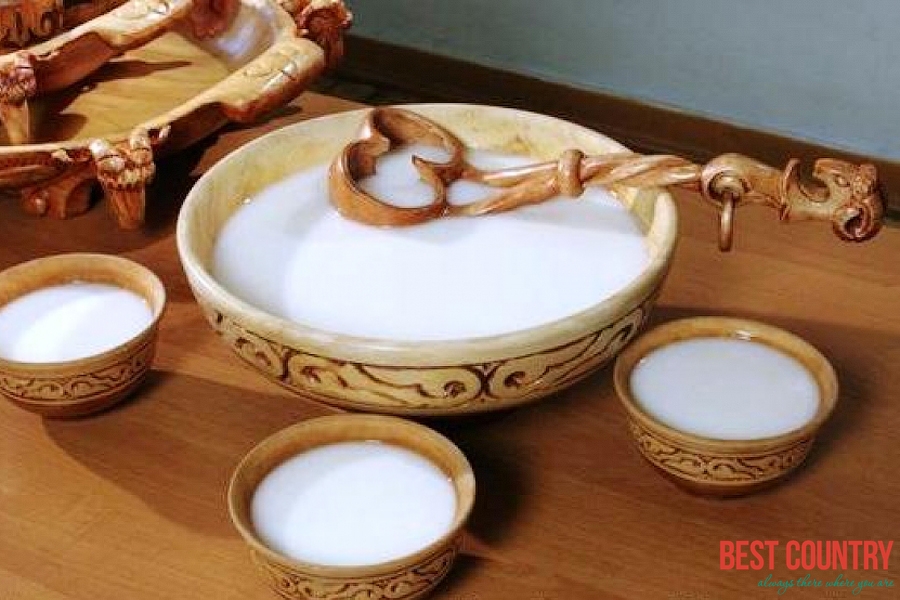Over the years, Mongolian nomads have developed a number of unique dairy products “white food” (tsagaan idee), which include different types of yoghurt (tarag, aarts), cottage cheesem (byaslag), dried curds(aarul ), and fermented mare’s milk (airag).
Mongolian Drinks
Preferably, airag is is made in autumn after the animals have eaten their full of summer grasses. It may be further distilled to produce a mongolian vodka (shimiin arkhi) – best consumed when warm and fresh.
 After a diet heavy on meat in winter, Mongolians have dairy products starting from late spring “to clean stomach” and dairy products are the main dish of Mongolians in summer.
After a diet heavy on meat in winter, Mongolians have dairy products starting from late spring “to clean stomach” and dairy products are the main dish of Mongolians in summer.
Summer is known as the “white season” and nomads work around the clock to process milk – turning it into cheese and variety of other dairy products to last them through the winter.
Out of this necessity Mongolians have found creative and ingenious ways to use the milk of all five livestock.
Each of their milk quality and nourishment has been defined thoroughly in thousands of years experience and interestingly the way they use and process differ in each region, province and even family because of special weather, environment and traditions.
Milk Tea
Mongolian tea is produced by adding a small quantity of tea leaves - typically from brick tea - to a pot of salted water, which is brought to a boil, whereupon a quantity of milk equivalent to about 1/3 the amount of water is added, and the tea is repeatedly scooped with a ladle and poured back into the pot so as mix the drink and allow it to foam.
Milk tea is often mixed with rice, flour, clotted cream or even pieces of meat to give it more substance, or consumed accompanied by home-made “boortsog “ - fried biscuits.
The central role of tea in the traditional Mongolian diet provides clear evidence of the importance of the nomads' participation in international trade over many centuries.
Indeed prior to the adoption of an official Mongolian currency in the early 20th century, commercial prices were commonly listed in units of brick tea.